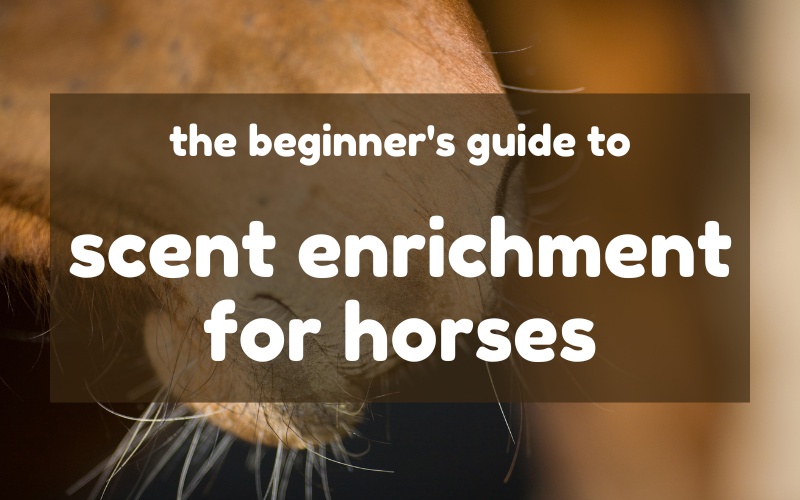
When was the last time you thought about how important scents and smells are to your horse? For most of us, the answer is probably never. But smell is one of your horse’s most important senses. Scent enrichment for horses is a way to give back variety and interesting scents that your horse can’t experience in their stall or paddock. And it’s a really easy way to relieve boredom and improve wellbeing!
In this post, we’ll cover:
- How horses use their sense of smell
- Why your barn might be a scent desert
- The benefits of creating a rich and varied scentscape
- How to use scents as part of a stall rest survival plan, or to improve your horse’s day to day life
Ready to stop and smell the roses? Let’s get started!
What IS a Scent, Anyway?
First, let’s define what scents are.
Scents are traces of molecules from different objects, living and nonliving. High up in our noses, special nerve cells detect molecules when we breathe or sniff. Those nerve cells talk to the brain, which interprets the signals as specific scents.
In a human body, it looks like this. The little blue blob is the “olfactory bulb,” the part of the brain that makes sense of scents.
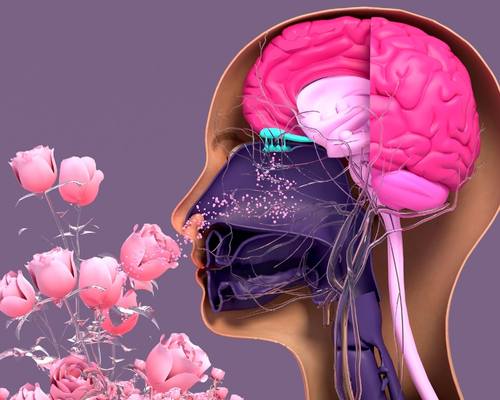
It’s similar in your horse’s body, but the nasal cavity and olfactory bulb are much bigger. Your horse also has a special organ above the roof of the mouth, called the vomeronasal organ, that helps boost the sense of smell. When your horse sniffs something and curls their lip, they’re using their vomeronasal organ:
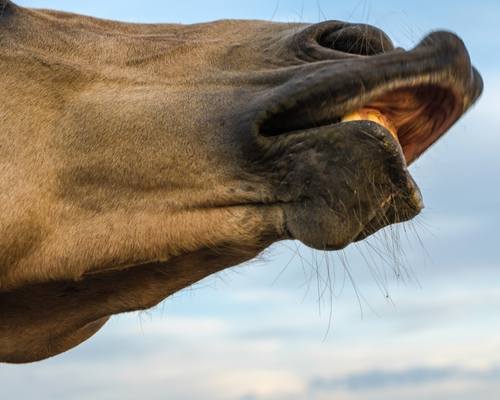
Scent molecules are everywhere, but we can’t detect all of them. And some items don’t give off a lot of molecules to detect (that’s why a coffee mug by itself has no scent, but a steaming espresso smells great).
Some animals have more receptor cells and brain space dedicated to scent, so their sense of smell is much more sensitive than ours. For more information about your horse’s sense of smell, you can take a deep dive on the
What’s That Smell?
Scent is wildly important to horses – more than we can probably understand.
Humans don’t have a great sense of smell. We tend to only pay attention to really heavy scents, or a change of smell that signals a problem (like a sudden whiff of smoke, or a puff of fragrance from a baby’s diaper).
Your horse’s sense of smell is much more sensitive. They have the same senses as their wild equine ancestors, who used scent every day to survive and navigate the world. Imagine having one sense that could give you instant info about all of this:
- The sex, mood, and health of all the horses around you
- What kind of horses crossed your home region recently, leaving manure or hoofprints
- Whether there is water close by – or not
- What plants are in the area and whether you can eat them
- Whether there’s a chance of storms of wildfire
- The presence of dangerous predators
That’s a LOT of information! And horses evolved to have all this info on tap, using their soft, very pettable noses.
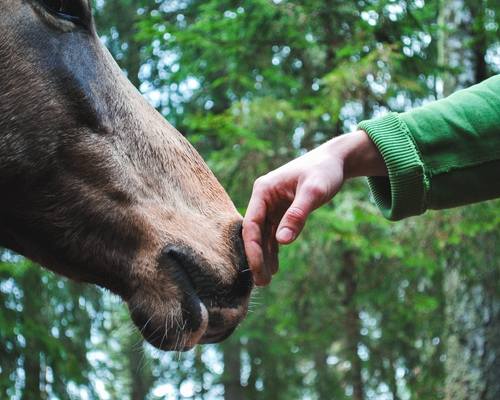
Smells Like Trouble
Things are different in a domesticated stable, especially if your horse spends time in a stall or individual paddock.
There are no predators to detect. Water and food show up in the same places every time. The food is usually the same each day, so all the forage and grain have the same smell.
There aren’t often new and unfamiliar horses around, so there’s no interesting manure or tracks to sniff for information. Other horses may be on the other side of stall bars, so close contact for scent exchange isn’t possible.
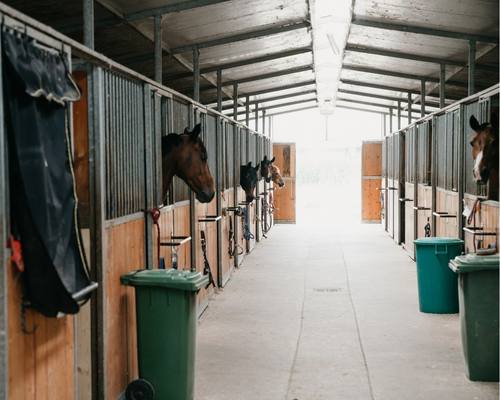
Lastly, the environment itself doesn’t change very much. It’s the same barn and the same pastures, each and every day.
Obviously a lot of this is a perk for your horse (not worrying about lions and tigers is a plus!). But in exchange, your horse lives in a scent desert. And for an animal with such a good sense of smell, that’s a little like wearing a blindfold or earplugs all the time.
Because horses evolved to smell things, not smelling things creates a lack of sensory variety. There’s not a lot of research into how horses feel about this, but we know that sensory deprivation in general is pretty bad for animals and people.
Not having enough stimulation, including mental and sensory stimulation, can lead to problems. These outcomes are part of why horses need enrichment.
Your horse may turn to unwanted behaviors in order to get stimulation, like being destructive or developing a stereotypical behavior in the pasture or stall. And when you take your horse off property, the sudden onslaught of new smells (along with everything else) can leave them overwhelmed and over threshold, making travel a negative and stressful experience for both of you.
Scent Enrichment for Horses is Simple
The lack of sensory variety in most modern stalls and turnouts means that scent enrichment for horses should be a priority in your enrichment plan.
Enrichment for horses means providing items or experiences that encourage natural behaviors. We can do this by giving horse enriched environments that let them behave more like horses, like full time group turnout in large, varied pastures.
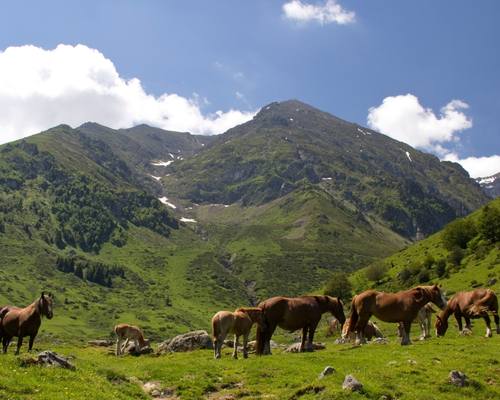
And when the environment doesn’t provide – like when your horse is confined to a stall due to injury or is turned out in an empty dry lot each day – we turn to enrichment items to help fill the gaps. Sensory enrichment, including scent, encourages your horse to use and experiences all their senses.
Scent enrichment for horses means adding different scents to your horse’s living space. You’ll also change the scents frequently to provide variety.
Which Horses Need Scent Enrichment?
Scent enrichment is fun and stimulating for all horses, but is especially important for those confined indoors.
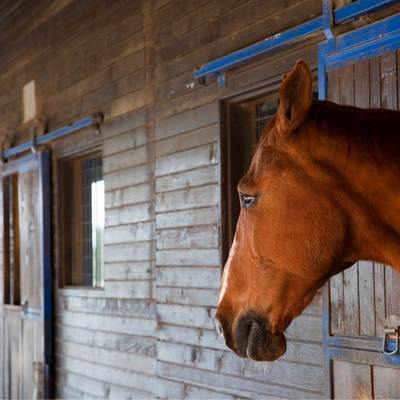
If your horse has to be stalled for illness or injury recovery, it’s a good idea to include daily scent enrichment as part of your behavioral management plan.
In other words, make scent a priority right alongside toys and puzzles for your stall-bound horse. The more variety, the better – including changing the smells you offer more than once a day if possible.
If your horse is outdoors, you should still consider scent enrichment a good option for variety and stimulation. It keeps the paddock experience fresh and encourages your horses to wander and explore. And since it’s so easy and there are options for every situation and budget, scent enrichment is one of the most accessible options to improve your horse’s sensory experience.
How to Use Scent Enrichment for Horses
Scent enrichment is really easy to provide – you just need sources of scent, and something to put them on.
In the wild, horses experience scent by sniffing objects, or by scenting the air. You can use either technique in your horse’s stable, but scented objects are the best way to confine the scent to a single location and provide scent enrichment to a single horse.
You can apply scent to any item in the stall or even the stall walls and floor, but it’s helpful to create or buy a few dedicated “scent objects” on which to rub, spray, or drop the day’s scent selection. Scent objects can be moved around and repaired or replaced if it becomes damaged, and you’ll be able to organize them separately from food-related enrichment items like puzzle feeders.
In a stall, you can use DIY items like the Sensory Scent Board, a purpose-built item with squashy soft surfaces for applying liquid or oil scent. Here’s a scent board on the wall of an empty stall, ready to apply scent:
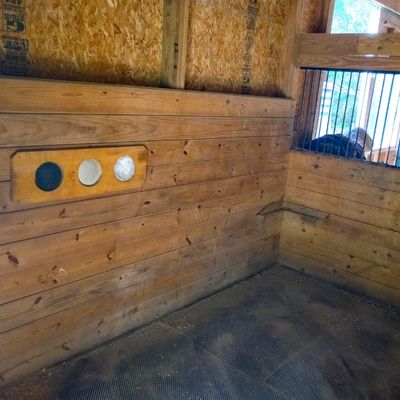
A simple wooden board attached to the stall wall is also a safe, semi-permanent location for applying scent. You can also use chair cushions, which come with Velcro straps for chairs but are excellent for hanging against stall bars.
Note that if you use soft materials like cushions or loose brushes, it’s best not to leave them unattended. A stall-confined horse may interact unsafely with items out of boredom.
What Scents to Use
You have almost unlimited variety to choose from, and many scent choices only involve a quick trip to the grocery store.
For a deeper dive, read through Five Easy Scent Enrichment Options for some quick and budget friendly ideas.
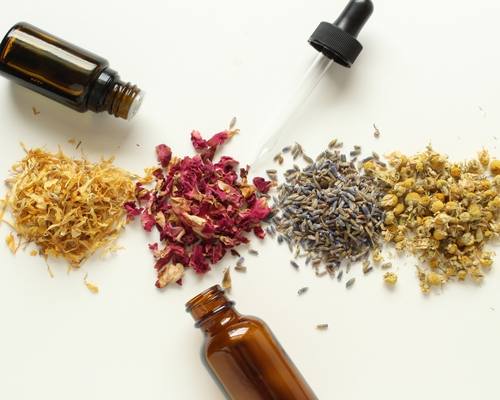
In brief, you can apply drops of essential oil or baking extracts to your scent objects, rub on a bit of spice or herbs, or borrow some scent from your horse’s herdmates. Crushed wildflowers and other natural items are a good choice. Consider making your own DIY essential oil spritzers for maximum versatility and easy use.
You can even use a bit of manure from one of your horse’s friends, tucked into a corner of the stall (they won’t think it’s gross!).
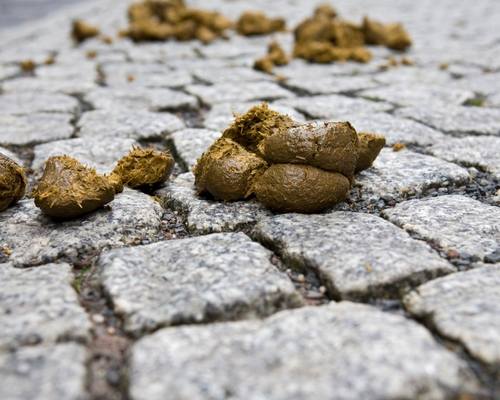
For stalled horses, try applying a scent each time you’re in the stable. Once you have a few scent supplies on hand, providing a new smell takes only seconds – and it makes the stall a bit less boring for your equine friend.
How NOT to Use Scent Enrichment for Horses
Most of the time I recommend against using whole-room diffusers or highly scented fragrance sprays in your horse’s stall or stable.
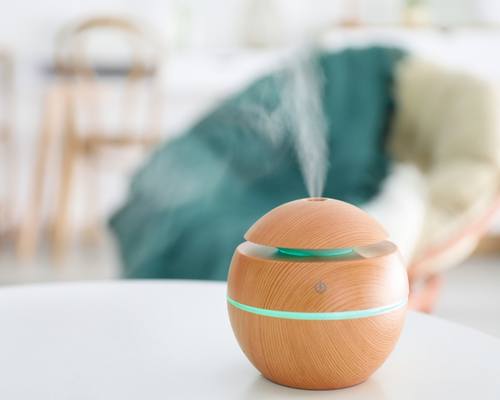
This is because enrichment should be voluntary for your horse, and a diffuser that fills the entire space with scent doesn’t give your horse the option to say “no” to the experience.
These products are also made for human noses, and your horse’s sense of smell is much more sensitive than ours. A stall filled with artificial fragrance or strong essential oil mist will probably not be a welcome place for your equine friend. If you’ve ever experienced a smell that was totally overwhelming – like cleaning products or strong perfume – you can understand.
You’ll also want to be reasonable with the amount of scent you apply to scent objects, especially when using essential oils. This basic essential oil kit is what I use for most scent enrichment, and a drop at a time is plenty.
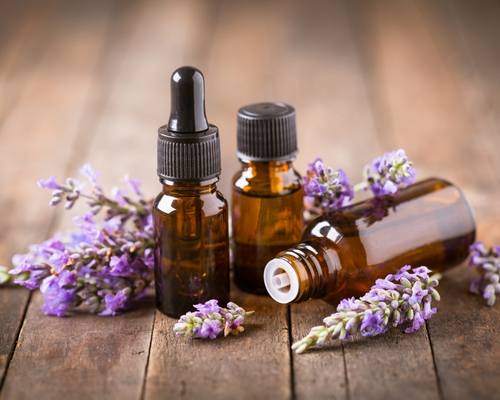
To keep things force-free and fun with scent, you should confine the smells to a small area that your horse can choose to sniff if they want. If you use a scent your horse finds aversive, they’ll be able to avoid it.
How to Tell If Your Horse Likes Scent Enrichment
You should plan to observe your horse when you use a new scent for the first time. Look for signs of interest and enjoyment, like approaching the smell object, resting their head near it to breathe in the scent, and showing the Flehmen response (curling the lip).
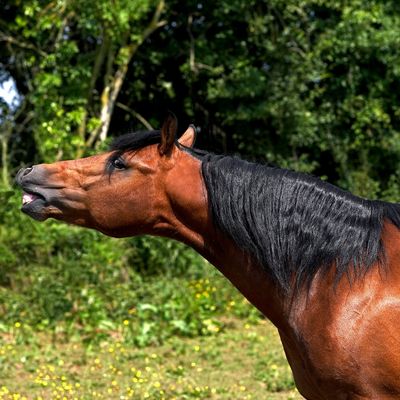
If you see signs of agitation, like widened eyes, tense posture, or trying to move around or away from the smell, wipe or rinse it off the scent object. This isn’t likely to happen, but horses are individuals and have preferences, likes, and dislikes.
If your horse doesn’t appear to enjoy any scent enrichment, you may want to review our article on neophobia (fear or avoidance of new experiences). Sensory enrichment can be unfamiliar to horses that have lived under tight management for a long time, and your horse may experience a learning curve!
Related Enrichment
Sensory enrichment is a whole new way of enjoying time with your horse, plus it helps keep them stimulated and free of boredom. For more sensory enrichment ideas, try:
Pingback: Fall Themed Scents for Horse Enrichment | Sensory Enrichment - Enriching Equines